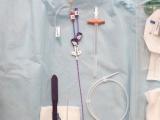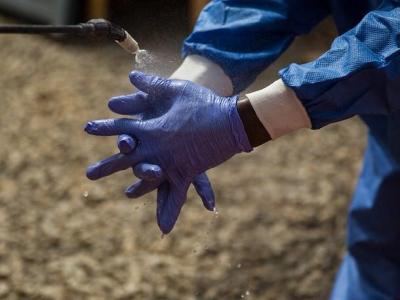Antibiotic treatment with C-reactive protein (CRP)–guided duration or fixed 7-day duration were found to be non-inferior to 14 days of antibiotic treatment in patients with uncomplicated gram-negative bacteremia, Swiss researchers reported this week in JAMA.
In a randomized controlled clinical trial involving more than 500 adults with uncomplicated bacteremia caused by gram-negative pathogens, rates of clinical failure for CRP–guided treatment and 7-day treatment compared with 14-day treatment met the non-inferiority criterion of 10%, the researchers reported. But they cautioned that interpretation of the results is limited by the large non-inferiority margin compared with the low observed event rate, along with low adherence and a wide range of treatment durations in the CRP group.
The aim of the study was to evaluate whether individualized antibiotic durations guided by a biomarker can be a viable option for treating gram-negative bacteremia, a frequent community-acquired and healthcare-associated bloodstream infection. Antibiotic treatments for this infection typically range from 10 to 14 days, but evidence has been mounting that 7 days of antibiotics is an option.
According to the authors of the study, however, these fixed durations of antibiotics cannot account for differences in patients, pathogens, and sources of infections. In some cases, patients may require longer therapy, while other patients may improve quickly and need less antibiotic support. Finding a strategy to tailor antibiotic therapy could help reduce unnecessary antibiotic exposure that drives the emergence of resistance and increase the risk for adverse events.
Fixed vs individualized therapy
The hypothesis behind the trial was that CRP, a protein produced by the liver in response to inflammation, is a highly sensitive, widely available, and inexpensive biomarker that could help clinicians figure out when patients need less antibiotic therapy. The investigators also wanted to evaluate how a fixed 7-day antibiotic treatment regimen compares to a fixed 14-day duration.
For the trial, the investigators screened and enrolled adults hospitalized with gram-negative bacteremia at three tertiary care hospitals in Switzerland from April 2017 to April 2019. Of the 2,345 patients screened, 504 were enrolled and randomized into three groups: 170 received CRP-guided antibiotic therapy, 169 received 7 days of antibiotic therapy, and 165 received 14 days of antibiotics. The patients and the clinicians were blinded between randomization and antibiotic discontinuation. In the CRP group, physicians were instructed to discontinue antibiotics once the serum CRP had decreased 75% from peak.
The primary outcome of the trial was clinical failure rate at day 30. Clinical failure was defined as at least one of the following: recurrent bacteremia, local suppurative complication, distant complication, restarting gram-negative antibiotic therapy because of clinical worsening, or death from any cause. Secondary outcomes included the clinical failure rate on day 60 and day 90.
The results showed that both CRP-guided antibiotic treatment and 7-day therapy were non-inferior to 14 days of therapy. Clinical failure by day 30 occurred in 2.4% of patients (4 of 164) in the CRP-guided group, 6.6% of patients (11/166) in the 7-day antibiotic group, and 5.5% of patients (9/163) in the 14-day group. The difference in CRP vs 14-day group was −3.1% (1-sided 97.5% confidence interval [CI], −∞ to 1.1; P < .001) and the difference in the 7-day vs 14-day group was 1.1% (1-sided 97.5% CI, −∞ to 6.3; P < .001).
These patterns held through days 60 and 90. At final follow-up, clinical failure occurred in 7.0% of patients (10/143) in the CRP group, 10.6% of patients (16/151) in the 7-day group, and 10.5% of patients (16/153) in the 14-day therapy group.
"This observation reinforces the principle that antibiotic duration need not be predefined in the first days of acute illness; rather, it should be determined in the days thereafter, in line with the patient's ongoing response," the authors of the study wrote. They added that the CRP-guided treatment proved effective and antibiotic-sparing compared with the 14-day fixed therapy, and that the CRP group had the fewest failures at every time point in the study.
But the results showed a wide range in antibiotic duration in the CRP-guided group, with a median of 7 days and a range of 5 to 28 days. In addition, the CRP group had more treatment-related per-protocol violations among patients who completed the 30-day follow-up (21%, 34/164) compared with the 7-day group (15%, 25/166) and the 14-day duration group (12%, 20/163).
The authors also noted that, in the absence of cost-effectiveness analyses, which are pending, the value and efficiency of either CRP-guided or 7-day antibiotic durations against 14-day durations cannot be determined.





















